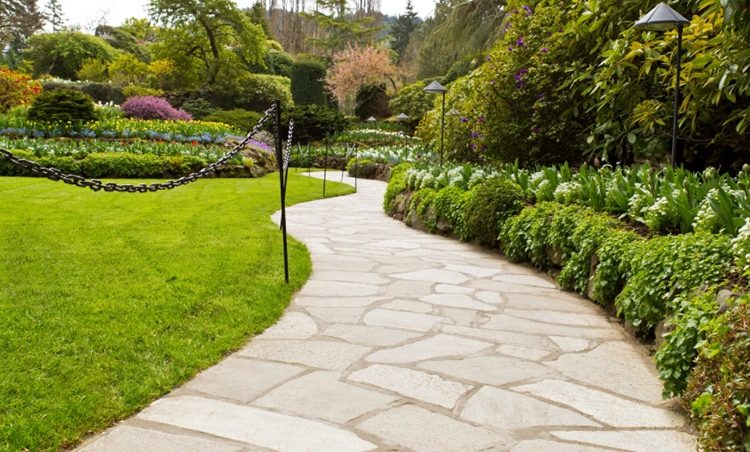Creating a charming and functional garden pathway is an excellent way to elevate the overall appeal of your outdoor space. Pathways guide visitors, connect focal points, and add structure to gardens. Choosing the right materials can ensure your pathway is both durable and visually appealing. If you’re considering options for your project, it’s essential to explore reliable resources for landscape supply in Milton, helping you find materials specifically suited to your local needs. Below, we’ve broken down some of the best materials for crafting beautiful garden pathways.
Gravel
Gravel is one of the most versatile and cost-effective materials available. This loose, natural material is perfect for minimalist or rustic-looking pathways. Gravel is especially fitting for gardens with irregular shapes or gently curving pathways since it conforms easily to any layout. Its benefits include excellent drainage, adaptability, and relatively affordable costs.
While gravel is easy to install and maintain, regular raking may be necessary to keep it level and prevent it from spreading. Adding metal or plastic edging can help contain the gravel, maintaining the pathway’s integrity. Keeping the soil’s texture beneath the path in mind is also important to ensure optimal stability.
Flagstone
For those who prefer a natural and timeless look, flagstone is an excellent option. This flat sedimentary stone is durable and comes in various colors ranging from earthy tans to cool grays. Flagstone can be used to create elegant stepping-stone pathways or broader, continuous paths. It’s also slip-resistant, making it perfect for areas with a lot of foot traffic or near water features.
One of the great advantages of flagstone is its flexibility in design; you can opt for irregular, more random patterns or precise cuts for a clean, uniform appearance. With the right soil preparation, such as tips discussed in the article, crafting your perfect landscape—you can ensure that flagstone pathways remain stable and visually stunning for years to come.
Natural Stone
Natural stone pathways, such as flagstone, slate, or sandstone, add undeniable elegance to gardens. Each piece of stone has a unique pattern and color, creating an organic, timeless look. Stone pathways work particularly well when paired with lush greenery for a balanced aesthetic.
While natural stone is pricier than other materials, its exceptional durability makes it worth the investment. Additionally, the irregular shapes of stones lend themselves to creative layouts. Proper preparation, including ensuring a level and supportive foundation, is crucial to avoid sinking or shifting over time.
Brick
Brick pathways bring old-world charm and warmth to any garden setting. Bricks are highly durable and can withstand weathering, making them great for outdoor use. Whether arranged in straight rows, herringbone patterns, or intricate designs, bricks offer plenty of customization options.
Brick pathways do require a bit of maintenance, such as occasional cleaning to prevent moss buildup. However, their enduring beauty and strength make them a popular choice for both traditional and modern garden landscapes.
Wood Mulch or Chips
If you’re looking for a softer, more natural aesthetic, wood mulch or chips might be the answer. These materials blend seamlessly with the surroundings and are an eco-friendly option. Additionally, they’re ideal for pathways in heavily planted areas, as they allow rainwater to permeate through to the soil.
While wood mulch is inexpensive and easy to install, it does require frequent replenishment, as the material can decompose over time. Still, the organic appeal and flexibility of this option make it a widely used choice for casual garden settings.
Crushed Stone or Decomposed Granite
Crushed stone or decomposed granite is another excellent material that bridges the gap between gravel and a solid surface. These fine materials are compacted to form a stable, even surface that’s easy to walk on. Available in a variety of colors, crushed stone can complement any garden style.
This material is particularly suitable for gardens with slopes or uneven terrain, as it can be leveled easily during installation. Keep in mind that decomposed granite may need occasional topping up to maintain its finish.
Stepping Stones
Stepping stones are a creative and playful way to craft pathways, especially in more whimsical gardens. These individual stones can be placed directly on grass, gravel, or soil. They create a more informal and lighthearted look while still being functional.
Stepping stones are low-maintenance and easy to install, but placement is key to their usability. Ensure the stones are spaced comfortably for walking and slightly sunken into the ground for stability.
Conclusion
Selecting the best materials for your garden pathway involves balancing aesthetics, functionality, and durability. From the rustic charm of gravel to the refined elegance of natural stone, each material has something unique to offer. Consider your garden’s style, the level of maintenance you’re comfortable with, and the soil’s characteristics to make the best choice. Knowing how to choose the right landscape supplies for different soil types can help you make more informed decisions for building a sturdy, long-lasting pathway. With thoughtful planning and the right materials, your garden pathway can become a stunning feature that enhances the overall beauty of your outdoor space.







